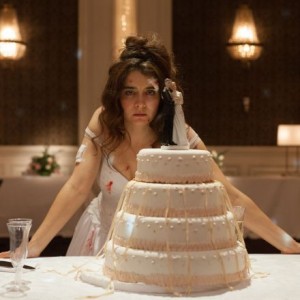Immersion is probably the favorite metaphor of intellectual and cultural historians for how they approach their sources. Only by breathing the air and drinking the water—to use two other metaphors—of their subjects can adept historians fully appreciate the ideas they examine. Of no less consequence is the task of taking the readers through a similar experience. At its best such history writing convinces readers that first, these ideas are worth noting, and second that what might seem on the surface impossible or illogical is in fact quite thinkable and even common-sensical. The same thing, I found out the other day, proves quite true for the best of fictions.
For me the movie Wild Tales (Relatos Salvajes
), the latests from the Argentinian director Damián Szifrón, did just that. It takes the viewer on a ‘wild’ journey through their own consciousness, intent upon convincing them that what on its face appears crazy and impossible is in fact possible. So much so, that even if, like me, you perceive yourself as quite incapable of unrestrained violence, it delivers quite well the point that under certain circumstances we can perform acts of violence we did not fathom we were capable of. At the very least, I would think, the movie provides arresting insights into the nether regions of the mind which allows one to understand the extent to which our image of ourselves and of our society is an historical construction. Or, to put it another way, that a coherent subjectivity and society are what I once heard referred to as a “reified metaphor” (1) that we daily operate under; nothing more.
What I found particularly pertinent for us historians in this movie is its structure. Consisting of six short movies that ostensibly share nothing with one another, Szifrón marshals what would on its face appear as disparate fragments of evidence to drive home his argument. Much like a good historian he inflects it with his own cinematographic style and his macabre footprint to deliver a meticulously synthesized narrative.
In a move that would appear quite familiar to many of us, the film begins with a tightly edited and particularly macabre short film that leaves one thirsting for more. In what follows we taste five very different narratives that share a unifying tragicomic energy that builds up towards the crescendo in the last act. Whereas the first film left me merely with a mirthful sense of mischief—for I was not yet convinced that the narrative portrayed held any relevance to me, or to anyone else for that matter—by the end of the movie and particularly during the final short movie I was fully “there.” Szifrón sold it and I bought it. And when I reflected back on the earlier narratives they all seemed much more legible—and believable.
It might just be that I’m in the middle of writing my dissertation and my mind is recognizing strong analogies even though they are quite weak. On the other hand, I recall that Margaret Atwood once said, “all novels are in a sense ‘historical’ novels; they can’t help it.” (2) So are movies, perhaps.
[1] Sorry, couldn’t recall or trace where I had first heard this term applied this way.
[2] Margaret Atwood, “In Search of Alias Grace,” AHR 103:5 (1998), 1507.


0